 |
|---|
 |
 |
 |
 |
 |
 |
 |
 |
 |
 |
 |
 |
 |
 |
 |
 |
 |
 |
 |
 |
 |
 |
 |
 |
 |
 |
 |
 |
 |
 |
 |
 |
 |
 |
 |
 |
 |
 |
 |
 |
 |
 |
 |
 |
 |
 |
 |
 |
 |
 |
 |
 |
 |
 |
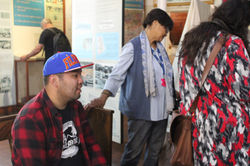 |
 |
 |
 |
 |
 |
 |
 |
 |
 |
 |
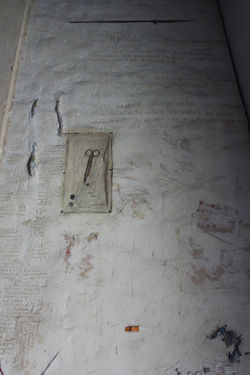 |
 |
 |
 |
 |
 |
 |
 |
 |
 |
 |
 |
 |
 |
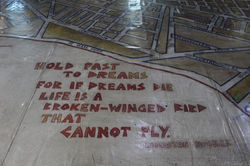 |
 |
 |
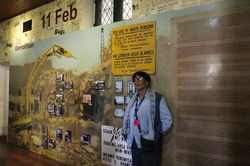 |
 |
 |
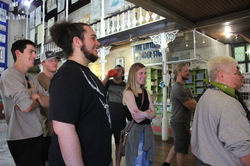 |
 |
 |
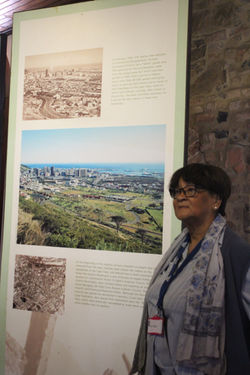 |
 |
 |
 |
 |
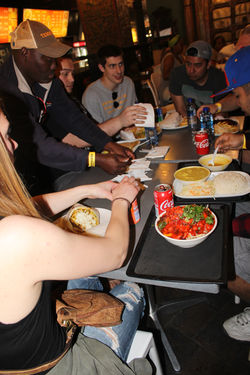 |
 |
 |
 |
 |
 |
 |
 |
 |
 |
 |
 |
 |
 |
 |
 |
 |
 |
 |
 |
 |
 |
 |
 |
 |
 |
 |
 |
 |
 |
 |
 |
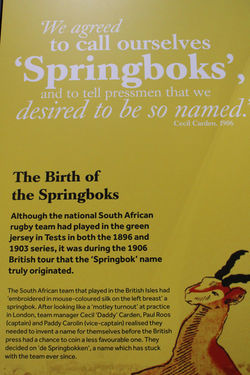 |
 |
 |
 |
 |
 |
-
What are your thoughts on District 6 and what does this mean to you? Talk about the stories you heard from the guide, Jasmina and her husband. What lesson can you take away from this? Is healing taking place?
Javier
District 6 is a place with mixed communities that built a strong relationship with one another. But they were forced to leave their homes, which was hard for the community. The government did it the worst way to make the people leave – by forcing them out of their homes. The woman from the District 6 Museum had a huge family. A family of 11 siblings, which was hard to live. Some families had to live in small, cramped homes. After hearing this, I had a good understanding of it since my father, from Mexico, lived that same way. So, I was able to understand even more of the hardship from a different country. The lesson I can take away from this, is learning the hardships, be more grateful and keep learning. It looks like they are healing, but I have a strong feeling that they aren’t. Right now, they are just trying to live with it.
Jackson
The District 6 tour was not what I was expecting because I did not know much about what District 6 was. The tour informed me greatly on the happenings of Apartheid. Our tour guide lived in District 6 and was able to give great insight on their experiences of being forced out by the whites. The most shocking part of the tour, for me, was seeing the size of their houses. It was a scale relative to what I am use to for a bedroom. Our tour guide’s house was occupied by 8 children and the parents.
I am taking away the lesson that this forceful moving was detrimental to the families of District 6. Family members experienced heightened stress and thought to be causes of their deaths.
I don’t think that healing is fully happening. It is almost equivalent to post-traumatic stress disorder. You can continue on with life, but things will always take that person back to those horrible experiences. I do believe that there is the use of “band-aids” that are working temporarily.
Leni
My thoughts on District 6 are that during its golden age, it was a cultural hub rich with happiness and social well-being for its residents. Even though all of District 6’s residents were fighting segregation and racism, I have been told that District 6 was a very beautiful place. Jasmina, the woman who taught us how to cook Malay food today, was a resident of District 6 before she and her family were forcibly removed by the government during Apartheid. Jasmina told us that District 6 was a melting pot of cultures and it was a glorious place during its time. There were shops everywhere, local vendors and restaurants, and everyone who lived there helped their neighbors. All of this ended when the government forcibly relocated all of District 6 residents and demolished everything. Families were placed in different sections of the city, and the people of District 6 were no longer united. The lesson I can take away from this is that no matter what situation you may be in, in life, make the most out of it, just like the residents of District 6. I believe that healing is taking place because during the tour, Ruth, the guide, who was also a District 6 resident, told us that she has forgiven the government for tearing her family apart.
Nick
I thought the District 6 Museum was a very interesting experience. It was very nice to have someone that had lived during the period of District 6 being active as a tour guide. She spoke very fondly of the times spent in District 6 housing. It was also neat to hear similar stories of fondness and affection about the times in District 6 from Jasmina. The stories really taught me the value of family and friends over possessions or the “quality” of living. I think that people have definitely healed from the removal from District 6, but I think they will never heal completely.
Justin
Because of Apartheid, there has been many situations of segregation and heartbreak of those who are non-white. One of these tragic stories is about District 6. Today I was able to learn about District 6 and what happened after going to this museum. Walking inside the old church that has been turned into the museum, I was quite fascinated by the display. The things that stood out the most for me are the two-story length image and unwritten stories on fabric, the street signs that created a skeletal tower in the center of the room, and the map that covered the floor and signed by the previous owners. I loved how the museum was made possible by the former residents and how they brought their old things from District 6 to make sure that they are not erased or forgotten from history.
The most tragic part of the story of District 6 former residents was that they were evicted and for the most part, driven and forcefully removed from this area because it was decided that District 6 is a white-only community. Basically, they removed the residents and demolished their houses. A once vibrant community changed into piles of rubble and broken down bricks. It’s not just the physical structure that they destroyed, but also their spirit and their will to have a purpose in life. Not only that, but they have torn the community apart and the bonds and relationship that they have built with one another.
The cooking time with Jasmina overall summed up the experiences of District 6 and she, too, told her story and what the area meant to her. It broke my heart, but we also discussed how the township was created and how the residents from District 6 not only lost their way of life, but their jobs as well.
District 6 has a big meaning to me. There are two reasons. First, Jasmina’s story is very familiar to me and growing up, being raised by a Grandma in a household of 28 individuals! The second is that something like District 6 is still happening in Seattle. People, especially people of color, are being driven out of the neighborhood by increasing property taxes. This is a very subtle way of driving out the unwanted people. I feel that this should be talked about more to find a better solution so that something like what happened to District 6 does not happen again.
Bryan
The most memorable aspect of today’s shenanigans was the dinner at Jasmina’s house. It was very cool to learn how to make the different meals she and her family cooked up for us tonight. And then hearing her story about living in District 6, and being “forcibly removed” by the government was very powerful and important towards fully understanding the history and impact of the District 6-Apartheid situation. Very cool experience overall.
This, and the story told by the woman that gave our tour at the District 6 museum, gave a very informative perspective overall of the hardships of those that lived in the district at that time. As for whether they have healed since that time, I think time heals all wounds. This long into the future, I’m sure they all still harbor some normal animosity, but Jasmina and the tour guide both seemed to have gotten over their hatreds and want to live happy lives. This mentality is probably largely influenced by the example Nelson Mandela set forth by forgiving those that imprisoned him so that he could go on living after he was released.
Kristin
District 6 had a lot of history before coming to South Africa. I didn’t have a lot of knowledge about the Apartheid and the segregation between the black, colored, and whites. I thought going through the museum was very informational. District 6 was very important to the people who lived there. It was very strong in community and was held close to a lot people’s hearts. From the stories that we heard from our tour guide and the family we shared dinner with (all who lived there), we were able to grasp the importance of District 6 and the effect of being forcibly removed. A lot of the people who had lived there were very attached to the community and the relationships they had formed during their time living there. When the removal happened, it seemed to be very aggressive. The people were placed all in different locations, separated from each other and without jobs. I think a lesson I can take away from this, is recognizing that graciousness can go a long way. I think it is important to understand that going about things in a kind and gracious way can go a long way. I also think it is important to recognize that change is difficult and uprooting someone’s life is going to cause a lot of backlash. I think it is frustrating for the people that had lived there, that the land is vacant and they were removed for almost no reason. But I think time heals and people are beginning to find peace.